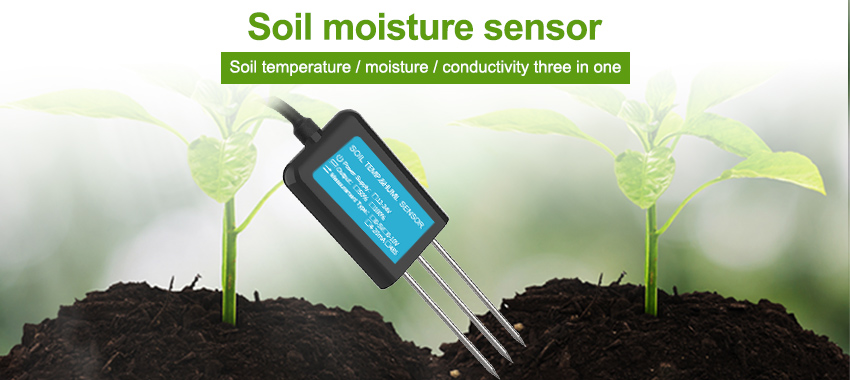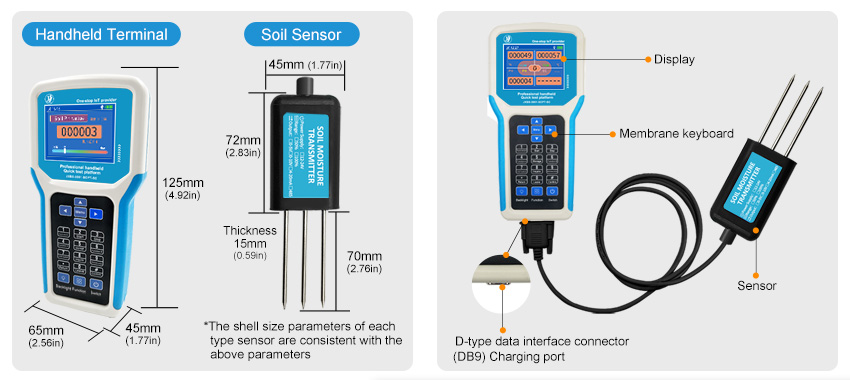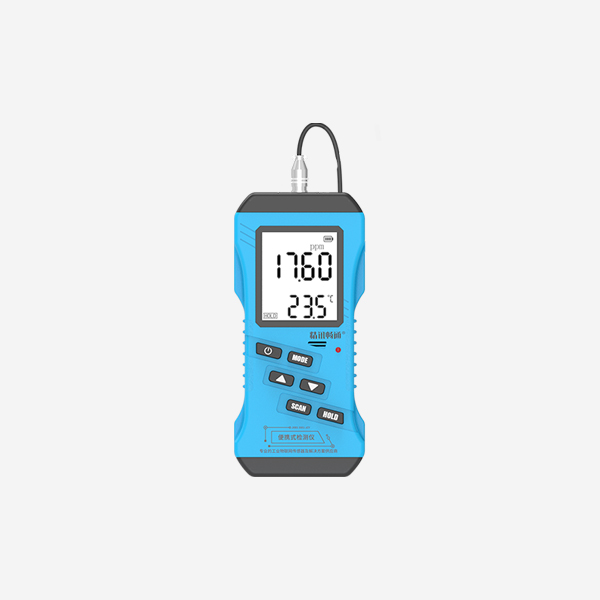Agriculture has always been a vital component of human civilization, providing food, fiber, and fuel for sustenance and economic growth. However, with the growing global population and the increasing demand for agricultural products, the traditional methods of farming are no longer sufficient to meet the needs of the modern world. This has led to the development of precision farming, a revolutionary approach that utilizes advanced technologies to optimize agricultural practices and maximize crop yields. One of the key technologies driving precision farming is soil sensors, which play a crucial role in unlocking the full potential of agriculture.

The Importance of Soil Sensors in Precision Farming
Soil sensors are electronic devices that are used to measure various parameters of the soil, such as moisture content, temperature, pH levels, and nutrient levels. These sensors provide real-time data that can be used to make informed decisions about irrigation, fertilization, and other farming practices. By monitoring the soil conditions at a granular level, farmers can optimize their resource usage and minimize waste, leading to higher yields and improved sustainability.
One of the main advantages of soil sensors is their ability to provide accurate and detailed information about the soil, allowing farmers to tailor their farming practices to the specific needs of their crops. For example, by monitoring the moisture content of the soil, farmers can determine the optimal timing and amount of irrigation, preventing overwatering or underwatering, which can lead to crop stress and reduced yields. Similarly, by measuring the nutrient levels of the soil, farmers can adjust their fertilization practices to ensure that their crops receive the necessary nutrients for healthy growth.
In addition to optimizing resource usage, soil sensors also play a crucial role in environmental sustainability. By preventing overuse of water and fertilizers, farmers can minimize the environmental impact of their farming practices, reducing pollution and conserving natural resources. This not only benefits the environment but also helps farmers to comply with regulations and standards related to sustainable agriculture.
Furthermore, soil sensors enable farmers to implement precision agriculture techniques, such as variable rate application and site-specific management. By using the data provided by soil sensors, farmers can create detailed maps of their fields, identifying areas with different soil conditions and crop requirements. This allows them to apply inputs, such as water and fertilizers, at variable rates, optimizing the use of resources and maximizing crop yields.
Challenges and Opportunities
While soil sensors offer numerous benefits for precision farming, their widespread adoption still faces several challenges. One of the main challenges is the cost of the sensors and the associated technology, which can be prohibitive for small-scale farmers. Additionally, there is a need for more research and development to improve the accuracy and reliability of soil sensors, as well as to develop user-friendly interfaces for farmers to interpret and utilize the data effectively.
Despite these challenges, there are also significant opportunities for the advancement of soil sensor technology in agriculture. With the rapid advancements in electronics and sensor technology, the cost of soil sensors is expected to decrease, making them more accessible to a wider range of farmers. Furthermore, ongoing research and development efforts are focused on improving the accuracy and reliability of soil sensors, as well as integrating them with other precision farming technologies, such as drones and satellite imagery, to provide comprehensive insights into soil and crop conditions.
In addition, the increasing demand for sustainable and environmentally friendly agricultural practices presents a significant opportunity for the adoption of soil sensors. As consumers and regulatory bodies place greater emphasis on sustainable agriculture, farmers are incentivized to invest in technologies that can help them minimize their environmental impact while maximizing their productivity.
Case Studies
Several case studies have demonstrated the effectiveness of soil sensors in precision farming. For example, a study conducted by researchers at the University of California, Davis, found that using soil moisture sensors in almond orchards resulted in a 30% reduction in water usage, while maintaining or increasing crop yields. Similarly, a study in the Netherlands showed that using soil sensors for precision irrigation in potato fields led to a 20% reduction in water usage, with no negative impact on crop yields.
Another case study from Australia demonstrated the potential of soil sensors for optimizing fertilization practices. By using soil sensors to monitor the nutrient levels of the soil, farmers were able to reduce their fertilizer usage by 25% while maintaining crop yields, resulting in cost savings and environmental benefits.
These case studies highlight the significant impact that soil sensors can have on agricultural productivity, resource usage, and environmental sustainability. By providing real-time data and actionable insights, soil sensors enable farmers to make informed decisions that can lead to significant improvements in their farming practices.

Conclusion
The role of soil sensors in precision farming is essential for unlocking the full potential of agriculture. By providing real-time data on soil conditions, soil sensors enable farmers to optimize their resource usage, minimize waste, and maximize crop yields. Furthermore, soil sensors play a crucial role in promoting environmental sustainability, by reducing the environmental impact of farming practices and conserving natural resources.
While there are challenges to the widespread adoption of soil sensors, ongoing research and development efforts, as well as the increasing demand for sustainable agriculture, present significant opportunities for the advancement of soil sensor technology. With the continued development and integration of soil sensors with other precision farming technologies, the future of agriculture looks promising, with the potential to meet the growing global demand for agricultural products while minimizing the environmental impact of farming practices.
